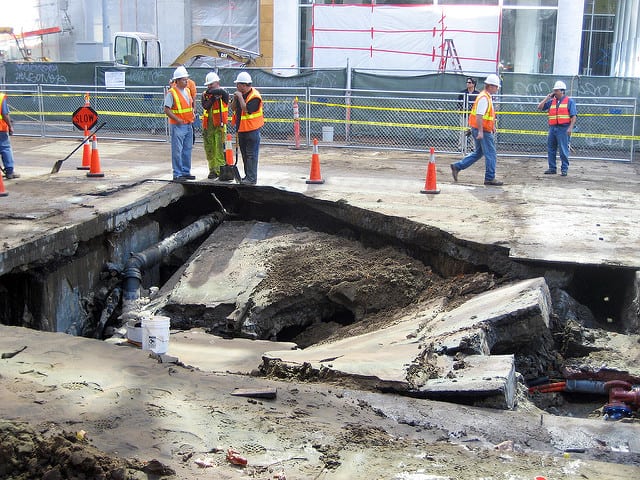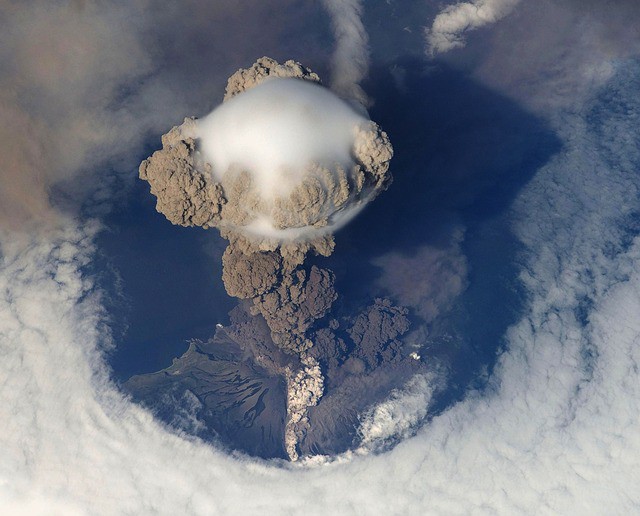Various Causes and Effects of Torandoes

The weather is a strange thing. One day it can be cold and rainy; the next day, it’s perfectly warm and sunny for sandals and bikinis on the beach. Humans have managed to develop products that enable them to handle many kinds of weather. For example, when it rains, an umbrella comes along way. When it’s overly hot, a sunscreen takes care of their skin. When snow piles up, a snow shovel comes in handy. However, certain locations experience extreme weather such as huge thunderstorms, snow storms or hurricanes that humans have been unable to deal with for a long time. However, there is one kind of destructive storm out there that scientists have developed special interest in. It’s called a tornado.
Tornadoes are violent, fast spinning columns of air that are in contact with both the earth’s surface and the thunderstorm clouds high up in the sky. Tornadoes are the most disastrous catastrophes within human lifetimes. They are extremely violent that in a short duration, the number of properties destroyed and casualties can be extraordinary. In fact, according to statistics, 1,300 tornadoes occur each year in the United States alone.
These tornadoes kill 60 people on average and most from falling and flying debris. The costliest tornado, the Topeka, Kan., that occurred on June 8, 1966, is estimated to have cost approximately $1,680,136,978 in today’s money. These statistics highlight the importance of awareness about tornadoes and how to detect early warning signs to minimize this carnage.
Causes of Tornadoes
Tornadoes form inside really huge thunderstorms and not just any kind of thunderstorm, but powerful towering thunderstorms known as Supercells. Rising air is the first ingredient required for a tornado to develop. When cold, dry air moving from one direction collides with warm wet air coming from a separate direction, a tornado develops. Since the cold air is denser than the warm air, the cold air glides down under pushing the warm air pretty fast.
The combination of air speeding up and down can develop a spiraling thunderstorm, and this can go on to form a tornado. When a tornado forms, it becomes one of the most potent forces in nature devastating everything in its path. In fact, tornadoes are considered the most powerful forces in the world. Even powerful than hurricanes.
Since tornadoes form pretty quick without warning, they can be hard to predict. Also, if thunderstorms happen in areas where temperatures at the ground are relatively warmer than those in the air, the storms can be powerful enough to result in more than one tornado.
Although it’s relatively hard to predict tornadoes, humans have developed technologies that can detect their possibility to occur. A typical example is the Doppler radar system that is able to determine when and where a tornado is about to happen. Doppler radar systems are designed to detect wind shear or divergences in wind speed and direction. The radar system will hook a location where winds are blowing at supersonic speeds in different directions. This fast movement of winds can unfold fast to form the rotation required to suck up cold air and warm air into the tops layers of the thunderstorm, developing the needed energy to convert the spinning into a mesocyclone, leading to a tornado.
Tornadoes, like any natural disaster such as landslides, floods, earthquakes, volcanoes or hurricanes culminate to severe devastation to property, infrastructure and lead to numerous deaths. We, humans, tend to only look at the negative impacts, which is understandable since the negative impacts far outweigh the positives. So, we just conclude that no natural force does positively impact humanity. However, many tornadoes occur without causing any destruction to humans. Here is an outline of the positive and negative impacts of tornadoes.
Effects of Tornadoes
Negative Impacts of Tornadoes
-
Injuries and Loss of life
The violent nature of tornadoes can cause severe injuries and lead to loss of life. Statistically, tornadoes cause 1,500 injuries each year. Averagely, 80 deaths as a result of devastating tornadoes are recorded each year. These figures point to the fact that tornadoes are life-threatening phenomenon that must be treated as a national disaster. Although tornadoes are still costing lives, scientists are working hard to develop powerful technologies that include detection and warning systems to residents to enable them to vacate before they strike.
-
Economic loss
Tornadoes can cause serious damage to a country’s economy. In 2011, deadly tornadoes in the U.S. cost the economy about $23 billion in damages. A tornado is so strong that it can destroy the whole house in seconds rendering the family homeless and in financial limbo. Other economic impacts of tornadoes include skyrocketing of insurance premiums after payouts, which can send the already devastated family into an economic meltdown.
-
Environmental contamination
A strong tornado can destroy pipelines; break chemical containers, which can lead to contamination of groundwater with oil, raw sewage, dioxides, asbestos and other toxic pollutants. Other wastes like medical wastes, industrial wastes, and household chemicals can be disbursed widely leading to environmental contamination. Strong thunderstorms on numerous occasions generate flooding rains and when added to tornadoes, can lead to long-term hazards to Mother Nature, for instance, enhanced risk of transmission of diseases via contaminated water and soils.
-
Destruction of vegetation
Tornadoes are strong enough to uproot trees and other vegetation on their path. In fact, one strong tornado that occurred on May 25, 2011, in CBS Sacramento, uprooted about 25, 000 almond trees. Farmers in the area reported that it would take more than 5 years to regrow the trees and become profitable again. In 1953, one strong tornado caused damages to crops worth about $4.3 billion.
-
Impacts on ecosystem
When a tornado uproots trees, sunlight penetrates the forest sections that were once covered, hence, affecting animal habitats. Tornadoes can also destroy the whole habitat, killing and displacing huge numbers of animals. A powerful tornado is also capable of damaging healthy soil by carrying away the top soil, which is essential for nourishing crops and other plants.
-
Psychological impacts
According to research finding by American Psychological Association, tornadoes can lead to long-term mental problems. Some people that have experienced tornadoes firsthand, exhibit strong emotional responses, which can be abnormal or normal. Natural disasters are capable of triggering traumatic recollections where the victim relives the phenomenon, experiences grave anxiety, depression, withdrawal, and enhanced fear of loss and death.
Positive Impacts of Tornadoes
-
Benefit to local animal and species
A tornado is capable of knocking down berries from trees, and these are great sources of food for most animals and poultry. Animals and poultry get the chance to get additional sources of nutrients for their well being.
-
Skill level improvement for contractors and workers
When a tornado sweeps down a neighborhood, contractors and workers develop better roofing techniques that are resistant to tornadoes. This greatly improves their skill levels.
-
Benefit of pollination
Tornadoes contribute to massive pollination of flowers, which would never be achieved by bees and animals alone. Pollination encourages rapid reproduction of local plant species.
-
Could help restore worrying communities
A tornado is a unifying factor. Local community feuds can be ironed out when a tornado sweeps the area. People will unite to rebuild property and infrastructure.
-
Clears out old vegetation
Tornadoes rupture virtually everything it their path including vegetation. This means that old vegetation would be blown away enabling new vegetation to spring up.
The United States experiences more tornadoes than any country in the world. More than 800 tornadoes occur each year. The central government has moved in to minimize the grave impacts by issuing watches and warnings for tornadoes. Watches are meant to increase public awareness of potential severe weather threat. Radio stations have also been created to give people real-time updates on the possibility of tornadoes. With strong technologies being developed, humans might just get around tornadoes in future.






